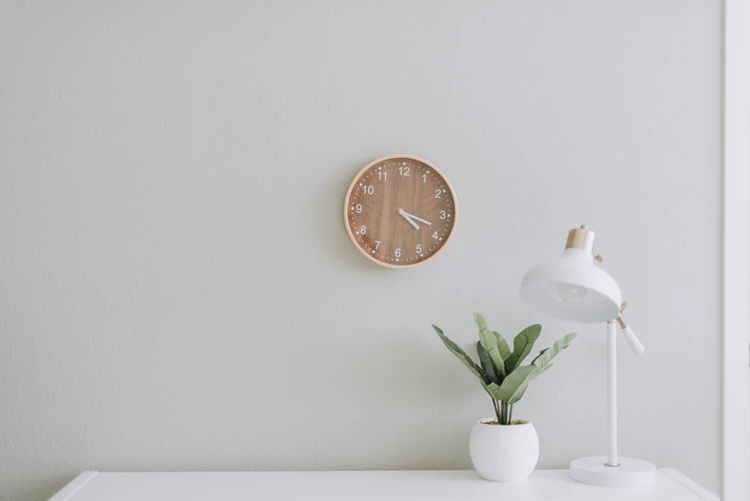Subscribe
"Unlock exclusive insights and elevate your financial wisdom with NetWorth.com — subscribe now to stay ahead in the wealth game!"

Photo by Samantha Gades on Unsplash
It may have seemed like something from a sci-fi movie just a couple of years ago, but offices around the world are using the latest technology to keep workspaces as sanitised as possible for workers.
One office in Bucharest recently unveiled 135 new measures in a bid to be as virus-free as possible, and some of them involve state-of-the-art equipment.
Yet all of this raises an important question: Are all these measures necessary to combat the spread of Covid-19? Or are we heading to an over-sanitised dystopian future? Here are some of the gadgets that are likely to raise eyebrows.
The estimated figure for the Covid-19 project alone stands at around €1 million – an amount that ordinary people might only spend after landing the winning lottery numbers, but a drop in the ocean for the huge companies that occupy the building, including communications giant Ericsson and leading property firm Genesis.
The costliest feature on show is probably the elevator, and surfaces throughout the building, that can self-clean. To do this, they are covered in a protective coating that bonds antimicrobial agents to metals and plastics, which then neutralise coronavirus on contact. It’s a big step-up from the two to six hours needed for previous self-cleaning surface technology, which experts have labelled as way too slow.
While certain sections of the media like to forecast apocalyptic visions of robots taking over the world, the anti-Covid versions are much less sinister. Standing at 1.2 metres tall, harmless disinfectant bots will patrol the building at night, using UV light to identify and eliminate pathogens. The machines can work up to 8 hours at a time, ideal for the break between workdays, and can self-charge – a process that only takes a few hours.
Hospitals, shopping centres and restaurants have used UV light tech for a while now, as it’s much more thorough than traditional hand cleaning. Companies such as OMRON, however, are taking it a big step further by introducing its LD Series mobile bot. Perfect for big office spaces and aircraft, robots like these are quickly growing in demand.
Companies are also attracted by the fact that an ultra-efficient robot will dramatically reduce the number of human cleaning hours, saving them a significant amount of money.
It’s not just mobile devices that will tackle the virus: permanent installations in the building’s ventilation system will emit hydrogen peroxide (H2O2) ions that neutralize airborne virus particles during the day.
However, not everything is straightforward with this method. While authorities such as the UK’S Health and Safety Executive (HSE) mention the method as an effective solution, it has also faced criticism from scientists.
The University of Saskatchewan (USask) released a report last year saying that disinfectant containing H2O2 may pollute the air and present a health risk. People who are repeatedly exposed, like office workers, are more likely to develop asthma and other respiratory issues.
It’s something the Bucharest project will have to consider as they put employee welfare at the top of their priority list.
Just as the doctor checks a patient’s pulse to get an idea of their health, a new digital twin display in the building’s foyer will give a quick overview of the entire building’s immune status.
They’ll be able to navigate a 3D map and go room to room to see which measures are in action at that point. It will also help them identify potential problem areas and recommend action to take to rectify them.
Not all the measures are super advanced. Builders will also fix simple but clever attachments to doors which will allow employees to open them with their lower arm instead of their hands. The aim, of course, is to prevent the spread of the virus via hands, the part of the body most likely to cause transmission, according to the Centers for Disease Control and Prevention (CDC).
Other low-tech solutions include rounded edges to fittings and floors, as germs are more likely to gather in corners. Also, employees will be encouraged to open windows whenever possible as studies show the virus is much less likely to infect people in a breezy environment.
With expensive projects such as this one likely to be repeated across the world, some sceptics believe that companies are over-reacting and have come up with a term for it: ‘hygiene theatre’. They think it may also given a false sense of security in that people will forget about simple person-to-person transmission in such a sanitised environment.
While it’s true that many of the measures are dramatic, can we really be too cautious when it comes to health? If such a great expense saves just one life, then surely it will have all been worth it.
The key is to find effective solutions that don’t infringe too much on personal liberties. Everybody wants to work in a safe, clean environment, but not if they spend a large part of their working day worrying about complying with overzealous safety requirements. Companies should also stress that social distancing is still just as important as any cleaning measure, in order to prevent interpersonal infections.
This will be a challenge for big businesses such as Ericsson as they aim to tackle the demands of the Covid era.